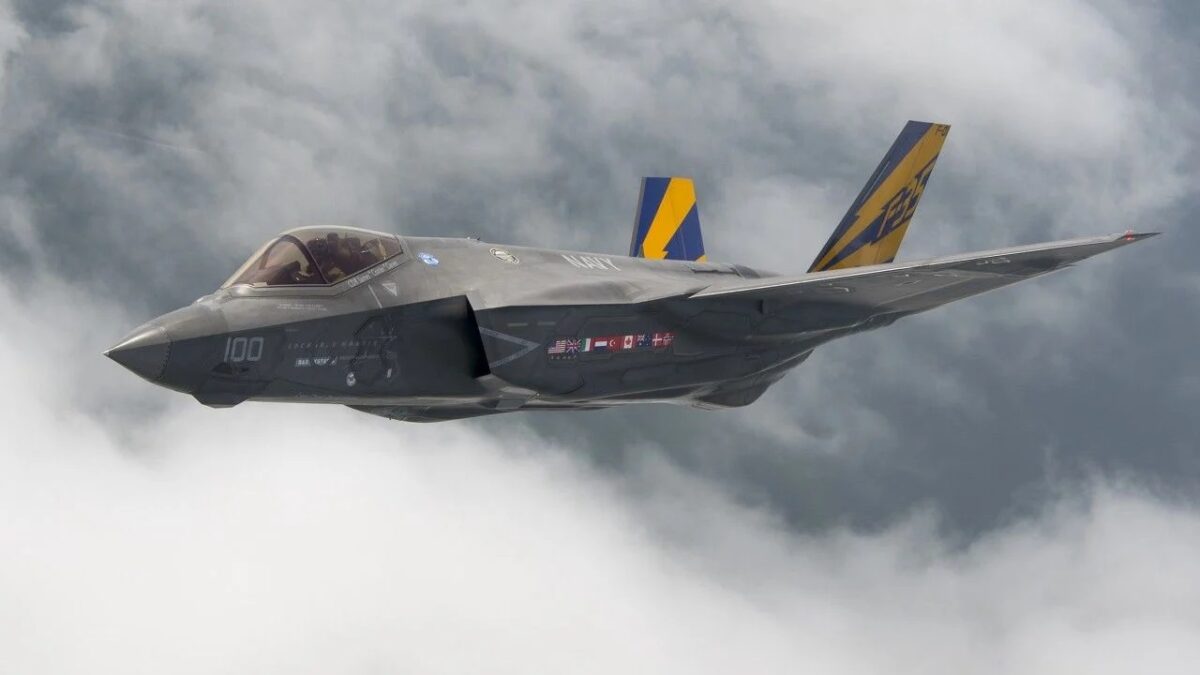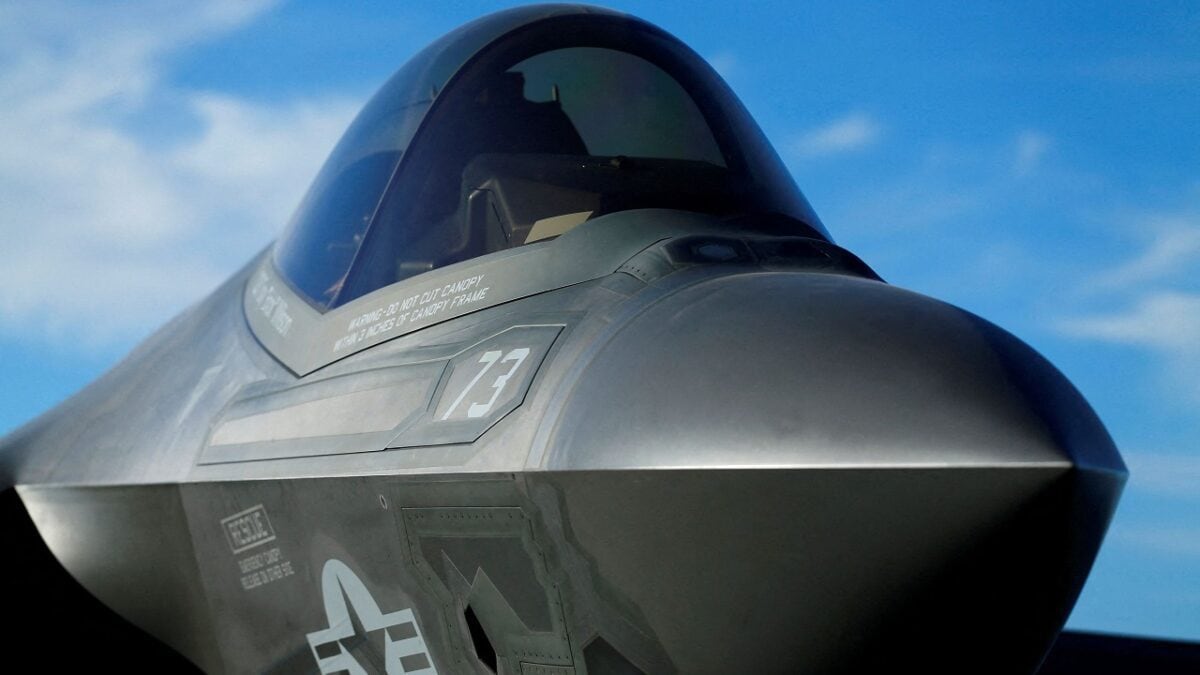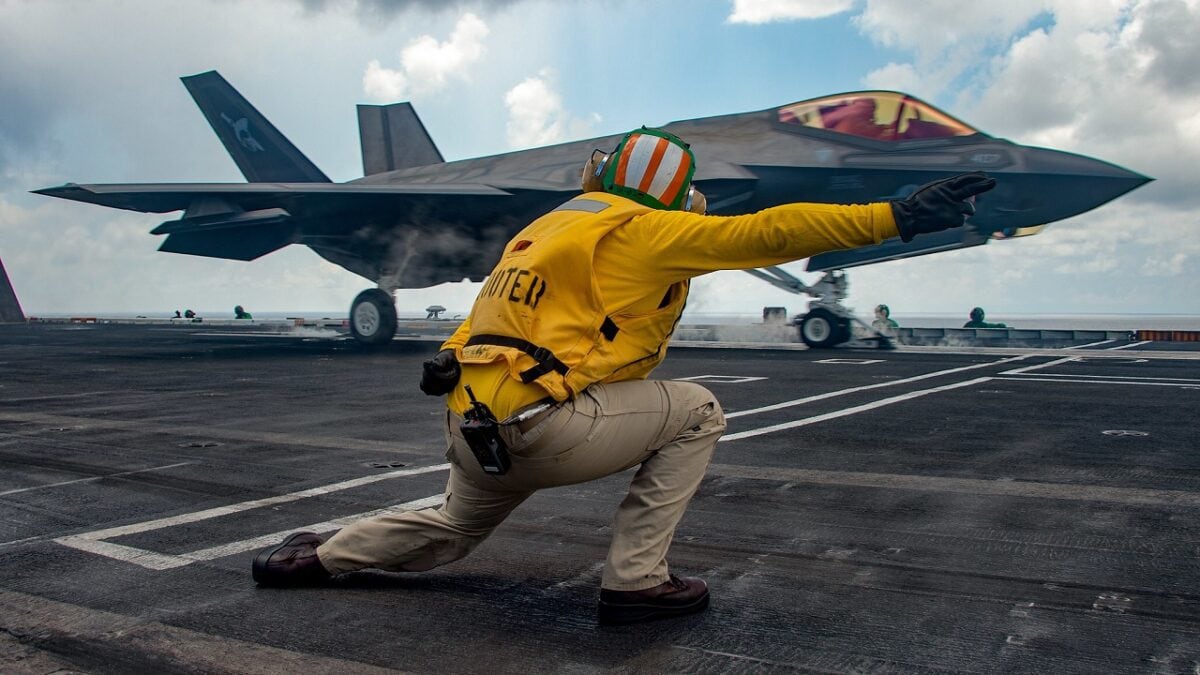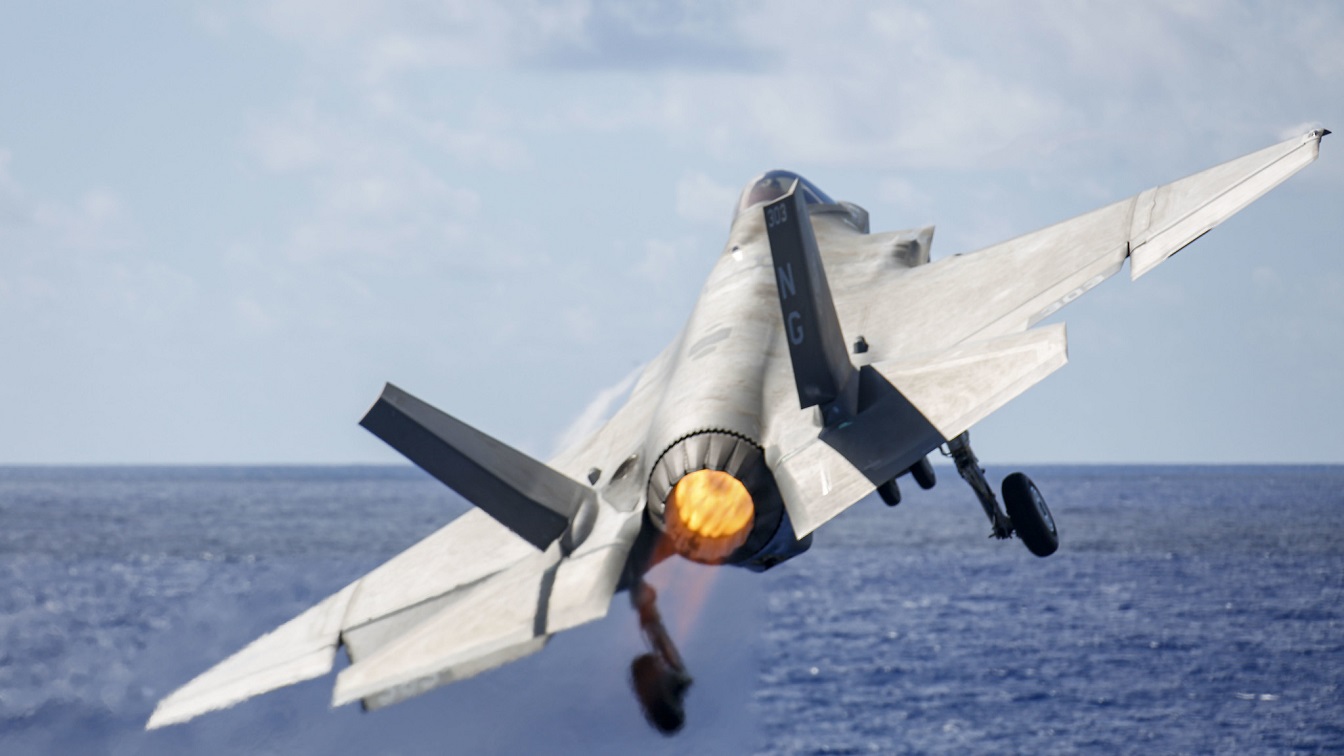The now operational F-35C has made history as a first-of-its-kind, aircraft carrier-launched 5th-generation stealth fighter, a development that changed the maritime power projection abilities of the U.S. Navy.
A “Naval Aviation Vision” document explained that the aircraft was specifically engineered for landing on carriers with all-weather coatings and specially configured landing gear to enable a safe landing.
The aircraft was developed with a broad wingspan and ruggedized components for harsh maritime conditions where rough seas, rain, wind, fog, and snow can complicate efforts to land. Its 51-foot wingspan makes it the largest of the three F-35 variants.
Much like the F-35A and F-35B short-take-off-and-landing aircraft, the F-35C relies upon advanced sensors and AI-enabled computing to gather, organize, and present time-sensitive critical information to pilots about altitude, speed, navigation, targeting, and threats.
The aircraft travels with a full suite of weapons including 5,000-pound, GPS-guided Joint Direct Attack Munitions along with air-to-air and laser-guided missiles. The F-35C can travel with 19,000 pounds of fuel and 18,000 pounds of weapons.
The aircraft can reach speeds up to Mach 1.6 and travel more than 1,200 nautical miles.
F-35C Carries Heavy Weapons Load
The stealth fighter also carries two AIM-120 air-to-air missiles (AMRAAM) and two 2,000-pound Joint Direct Attack Munitions, as well as the AIM-9X and the high-tech, all-weather StormBreaker precision glide bomb.
In development for many years, the StormBreaker is a high-tech weapon able to track and destroy moving targets from great distances using a tri-mode seeker with millimeter wave, laser, and infrared guidance technology.

Stealth F-35C. Image Credit: Creative Commons.
Another large advantage specific to the F-35 leverages a new generation of computing built into the aircraft which enables a smoother, safer landing for pilots on the carrier deck. The technology is a software called Delta Flight Path, an advanced series of algorithms that ease the workload placed upon pilots during their approach to a carrier when landing.
The software, therefore, naturally increases safety margins and reduces what’s called touchdown dispersion.

A Lockheed Martin Corp’s F-35C Joint Strike Fighter is shown on the deck of the USS Nimitz aircraft carrier after making the plane’s first ever carrier landing using its tailhook system, off the coast of California, November 3, 2014. REUTERS/Mike Blake (UNITED STATES – Tags: TRANSPORT MILITARY)/File Photo
The software helps pilots navigate the many complexities associated with a carrier landing as pilots must account for the wind speed, atmospheric conditions, and speed of the ship.
Pilots follow a yellow light on the flight deck of the ship called the Fresnel Lens to help the trajectory of the approach, called their glide slope, Navy pilots explain.

SOUTH CHINA SEA (Oct. 25, 2021) Lt. Nicholas Eppler, from Exeter, Calif., directs flight operations as an F-35C Lightning II assigned to the “Argonauts” of Strike Fighter Squadron (VFA) 147 launches from the Nimitz-class aircraft carrier USS Carl Vinson (CVN 70), Oct. 25, 2021. The Carl Vinson Carrier Strike Group is on a scheduled deployment in the U.S. 7th Fleet area of operations to enhance interoperability through alliances and partnerships while serving as a ready-response force in support of a free and open Indo-Pacific region. (U.S. Navy photo by Mass Communication Specialist Seaman Emily Claire Bennett) 211025-N-TY704-1241
Kris Osborn is the Military Affairs Editor of 19FortyFive and President of Warrior Maven – Center for Military Modernization. Osborn previously served at the Pentagon as a Highly Qualified Expert with the Office of the Assistant Secretary of the Army—Acquisition, Logistics & Technology. Osborn has also worked as an anchor and on-air military specialist at national TV networks. He has appeared as a guest military expert on Fox News, MSNBC, The Military Channel, and The History Channel. He also has a Masters Degree in Comparative Literature from Columbia University.
From the Vault
‘You Really Oughta Go Home’: F-22 Raptor Stealth Fighter Flew Under F-4 From Iran

